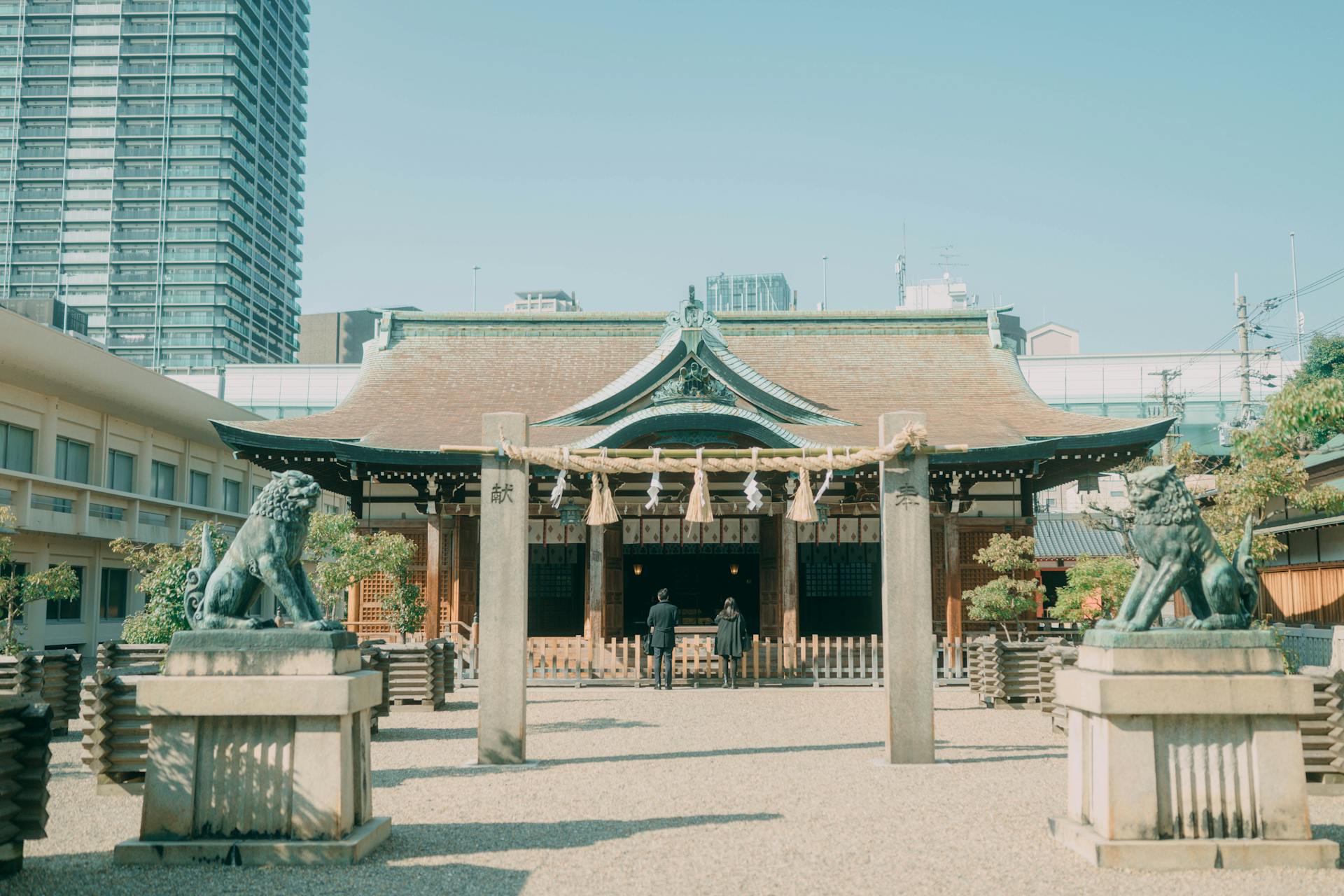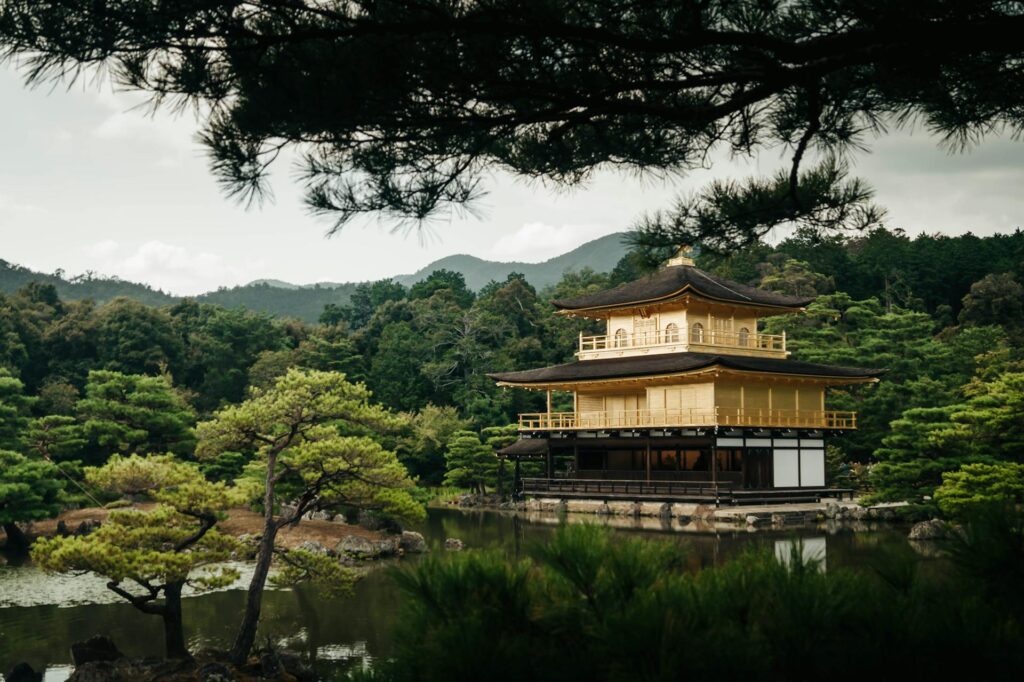Have you ever wondered how Japanese architecture creates such harmony between nature and minimalism? Many of us find ourselves caught in the chaos of daily life, yearning for a space that feels both serene and functional. Japanese architecture offers a unique solution, blending natural elements with minimalist design to create environments that feel like a breath of fresh air. Let’s dive into the fascinating world of Japanese architecture and explore how it masterfully balances these elements.
The Essence of Japanese Architecture
Japanese architecture is rooted in a profound respect for nature, which is evident in its design principles. Traditional Japanese homes often incorporate natural materials like wood and stone, allowing the building to blend seamlessly with its surroundings. This connection to nature is not just aesthetic; it’s a philosophy that emphasizes the importance of harmony between human life and the natural world. The use of sliding doors and large windows further blurs the lines between indoor and outdoor spaces, inviting nature to be a part of everyday life.
Minimalism in Japanese architecture is about more than just simplicity; it’s about creating spaces that promote calm and clarity. By eliminating unnecessary elements, Japanese architects focus on what truly matters—functionality and beauty. This approach encourages a mindful lifestyle, where each object has a purpose and each space is designed to enhance the well-being of its occupants. The result is a living environment that feels both spacious and intimate, offering a sanctuary from the hustle and bustle of modern life.
Natural Materials and Their Significance
In Japanese architecture, the choice of materials is crucial. Wood, in particular, holds a special place due to its versatility and natural beauty. Whether it’s the warm hues of cedar or the subtle grains of pine, wood is used extensively in everything from structural beams to delicate screens. This reliance on natural materials creates a sense of warmth and tranquility, making the home feel like a natural extension of the landscape.
Stone is another essential material used in Japanese architecture, often seen in garden pathways and foundational elements. The use of stone not only adds a tactile quality to the design but also represents strength and permanence. These materials together create a tactile experience that grounds the architecture, reinforcing the connection to the earth and enhancing the overall aesthetic. The careful selection and placement of these materials are a testament to the meticulous attention to detail that defines Japanese architectural practice.
Integration of Indoor and Outdoor Spaces
One of the most striking features of Japanese architecture is its seamless integration of indoor and outdoor spaces. This is achieved through the use of features like engawa, which are narrow verandas that run along the perimeter of the house. Engawa serves as a transitional space that blurs the boundary between the interior and the garden, allowing for a fluid interaction with the natural environment.
Moreover, traditional Japanese gardens are designed to be viewed from within the home, creating a living artwork that changes with the seasons. These gardens often include elements like water features, rocks, and carefully pruned plants that reflect the natural landscape. By incorporating these elements into the home, Japanese architecture fosters a deep appreciation for nature and encourages a lifestyle that is in tune with the rhythms of the environment.
Minimalism and Spatial Efficiency
Japanese architecture is renowned for its minimalist approach, which prioritizes spatial efficiency and functionality. This is particularly evident in the use of tatami mats, which are traditional flooring materials made from rice straw. Tatami mats not only provide a soft, natural surface but also dictate the proportions of the room, ensuring that each space is perfectly balanced and harmonious.
The concept of “ma,” or negative space, is another key element in Japanese design. By leaving areas intentionally empty, architects create a sense of openness and tranquility that allows for flexibility in how spaces are used. This minimalist approach is not about deprivation but about focusing on what is truly essential, resulting in environments that are both practical and aesthetically pleasing.
Influence of Zen Philosophy
Zen philosophy has a profound impact on Japanese architecture, emphasizing simplicity, clarity, and the beauty of imperfection. This influence is seen in the use of natural materials, the careful arrangement of spaces, and the focus on creating a sense of peace and balance. Zen gardens, with their meticulously raked gravel and thoughtfully placed stones, are a perfect example of this philosophy in action.
In the home, Zen principles manifest in the form of uncluttered spaces, natural light, and a subdued color palette. These elements work together to create an atmosphere of calm and reflection, encouraging residents to live mindfully and appreciate the present moment. The result is a home that feels like a sanctuary, offering respite from the demands of the outside world.
The Role of Light in Japanese Architecture
Light plays a crucial role in Japanese architecture, used to enhance the natural beauty of materials and create a sense of harmony within the space. Traditional shoji screens, made from translucent paper, diffuse sunlight, casting a soft, ethereal glow throughout the room. This gentle illumination not only highlights the textures of wood and stone but also creates a serene atmosphere that is conducive to relaxation.
Japanese architects also make strategic use of shadows, understanding that the play of light and dark can add depth and interest to a space. By carefully considering the orientation of a building and the placement of windows, they ensure that light enhances the architectural features and creates a dynamic, ever-changing environment. This thoughtful approach to lighting is a key aspect of the minimalist aesthetic, demonstrating how simplicity can be both beautiful and functional.

Modern Interpretations of Traditional Design
While traditional Japanese architecture continues to inspire, modern architects are finding new ways to interpret these age-old principles. Contemporary designs often incorporate advanced materials and technologies while maintaining a strong connection to nature and minimalism. This fusion of old and new results in innovative spaces that respect tradition while embracing modernity.
For example, modern Japanese homes might feature open-plan layouts that maximize natural light and ventilation, using sustainable materials that reflect the principles of traditional design. These homes often incorporate smart technology to enhance energy efficiency and comfort, demonstrating that the core values of Japanese architecture are as relevant today as ever. By blending tradition with innovation, modern architects continue to push the boundaries of what is possible, creating spaces that are both functional and inspiring.
The Global Influence of Japanese Architecture
Japanese architecture has had a significant impact on design practices around the world, influencing everything from urban planning to interior design. The principles of minimalism, natural integration, and spatial harmony resonate with many cultures, offering a universal appeal. Architects and designers globally have embraced these concepts, incorporating them into a wide range of projects.
Incorporating Japanese elements such as open spaces, natural materials, and minimalist aesthetics into global designs has led to a more thoughtful approach to architecture. This cross-cultural exchange has enriched the architectural landscape, fostering a deeper appreciation for the balance between nature and design. As more people seek sustainable and harmonious living environments, the influence of Japanese architecture is likely to continue growing, inspiring new generations of designers.
Sustainability and Environmental Considerations
Sustainability is a core principle of Japanese architecture, reflecting a deep respect for the environment. Traditional practices emphasize the use of local materials and construction methods that have minimal impact on the land. This eco-friendly approach is evident in the design of passive houses, which use natural ventilation and insulation to reduce energy consumption.
Modern Japanese architects are also pioneers in sustainable design, integrating renewable energy sources and green technologies into their projects. By harnessing solar power, rainwater harvesting, and energy-efficient systems, they create buildings that are both environmentally responsible and aesthetically pleasing. This commitment to sustainability not only preserves the natural landscape but also sets a standard for future generations, demonstrating that beauty and environmental stewardship can go hand in hand.
The Timeless Appeal of Japanese Architecture
The timeless appeal of Japanese architecture lies in its ability to create spaces that are both beautiful and functional. By prioritizing simplicity, natural materials, and a connection to the environment, Japanese design offers a refreshing alternative to the complexity and chaos of modern life. Whether it’s a traditional tea house or a contemporary urban dwelling, the principles of Japanese architecture continue to inspire and captivate.
In an increasingly fast-paced world, the calm and clarity offered by Japanese architecture provide a much-needed respite. These spaces invite us to slow down, appreciate our surroundings, and live more mindfully. As more people seek environments that promote well-being and harmony, the enduring appeal of Japanese architecture is sure to grow, offering timeless lessons in balance and beauty.
Embracing Japanese Architecture in Everyday Life
For those inspired by Japanese architecture, incorporating its principles into everyday life can bring a sense of peace and balance. Simple changes like using natural materials, decluttering spaces, and creating a connection with nature can transform a home into a sanctuary. By embracing the values of minimalism and harmony, we can create environments that enhance our well-being and reflect our appreciation for the natural world.
Whether you’re redesigning a room or simply seeking to live more mindfully, the lessons of Japanese architecture offer valuable insights. By focusing on what truly matters and creating spaces that nurture the soul, we can foster a deeper connection to our surroundings and ourselves. In doing so, we embrace a lifestyle that celebrates simplicity, beauty, and the timeless wisdom of Japanese design.
Conclusion
Japanese architecture is a masterful blend of nature and minimalism, creating spaces that are both beautiful and functional. By respecting the natural world and embracing simplicity, Japanese design offers a timeless approach to living that resonates with people around the globe. Whether through traditional or modern interpretations, the principles of Japanese architecture continue to inspire, offering a path to harmony and well-being in our everyday lives.

Recent Posts
15 Floor Plan Graphic Styles That Will Elevate Your Presentation Game
The Role of Shadows in Architectural Storytelling
When Furniture Becomes Architecture: Blurring the Line